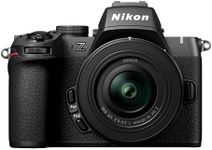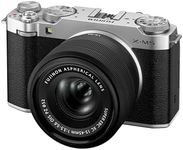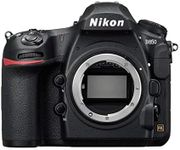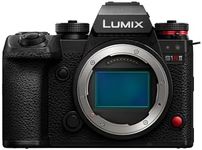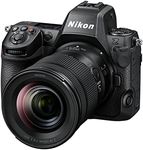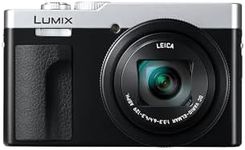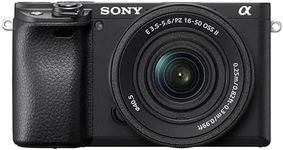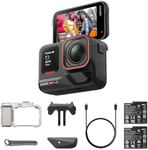Buying Guide for the Best Photography Cameras
Choosing the right camera for photography involves understanding your needs and matching them with the camera's features. Whether you're a beginner or a professional, the right camera can make a significant difference in the quality of your photos and your overall experience. Consider what types of photography you are interested in, such as landscape, portrait, or action, as this will guide you in selecting the right features. Also, think about how you plan to use the camera, whether for casual use, travel, or professional work, as this will influence the importance of certain specifications.Sensor SizeThe sensor size in a camera is crucial because it affects the image quality, depth of field, and low-light performance. Larger sensors, like full-frame or APS-C, generally provide better image quality and perform well in low-light conditions, making them ideal for professional photography or serious enthusiasts. Smaller sensors, like those in compact cameras or smartphones, are more portable and can be sufficient for casual photography. Consider a larger sensor if you need high-quality images and are willing to carry a bulkier camera, or a smaller sensor for convenience and everyday use.
MegapixelsMegapixels refer to the resolution of the camera's sensor, indicating how many millions of pixels the camera can capture. More megapixels mean more detail, which is important for large prints or cropping images without losing quality. However, more isn't always better, as it can lead to larger file sizes and may not improve image quality if the sensor is small. For most users, a camera with 16-24 megapixels is sufficient, but if you plan to print large photos or need to crop heavily, consider a camera with higher megapixels.
Lens OptionsThe availability of different lenses can greatly expand your creative possibilities in photography. Interchangeable lens cameras, like DSLRs and mirrorless models, allow you to switch lenses to suit different types of photography, such as wide-angle for landscapes or telephoto for wildlife. Fixed lens cameras are more compact and convenient but limit you to the built-in lens. If you want versatility and plan to explore various photography styles, choose a camera with interchangeable lenses. For simplicity and ease of use, a fixed lens camera might be more suitable.
Autofocus SystemThe autofocus system determines how quickly and accurately a camera can focus on a subject. This is particularly important for action or wildlife photography, where subjects move quickly. Cameras with advanced autofocus systems, featuring multiple focus points and fast tracking, are ideal for capturing sharp images in dynamic situations. For general photography, a basic autofocus system with fewer focus points may suffice. Consider your photography style; if you often shoot fast-moving subjects, prioritize a camera with a robust autofocus system.
ISO RangeISO range indicates a camera's sensitivity to light, affecting its performance in different lighting conditions. A wider ISO range allows for better performance in low-light situations, reducing the need for a flash and minimizing noise in images. Cameras with high ISO capabilities are beneficial for indoor or night photography. If you frequently shoot in low-light environments, look for a camera with a broad ISO range. For daylight or well-lit conditions, a standard ISO range will be adequate.
Video CapabilitiesMany cameras now offer video recording features, which can be important if you plan to capture both photos and videos. Consider the resolution (such as 4K or Full HD) and frame rates available, as higher resolutions and frame rates provide better video quality and smoother motion. If video is a significant part of your work, look for a camera with strong video capabilities, including good autofocus during video recording and external microphone support. For primarily still photography, basic video features may be sufficient.
Build Quality and Weather SealingThe build quality and weather sealing of a camera determine its durability and ability to withstand harsh conditions. Cameras with robust build quality and weather sealing are ideal for outdoor and travel photography, as they can handle dust, moisture, and temperature variations. If you often shoot in challenging environments, prioritize a camera with these features. For indoor or casual use, a standard build quality without weather sealing may be adequate.





